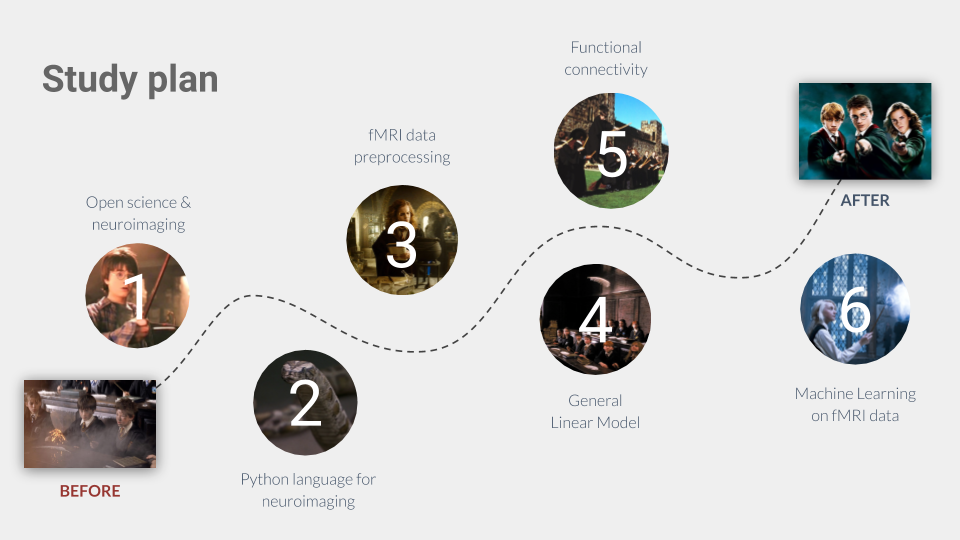fMRI data analysis course
Materials for fMRI data analysis course taught at Nicolaus Copernicus University in Toruń for cognitive science students (including first-year students). The course covers fundamental topics in fMRI data analysis (in Python).
The Hogwarts way
I called the way of teaching the course the Hogwarts way. It refers to the fact that for most participants, the fMRI data analysis, python programming, version control, etc. was like magic at the beginning of the course. The goal of the course was to introduce topics of fMRI data analysis, reproducibility, Python, and version control, giving students a lot of FUN and freedom.
The most important goal of the course was to reduce the initial fear of trying something entirely new, which is, in fact, quite complex.
How to become neuroinfomagician?
General information
The course was supported by DataCamp Classroom and GitHub Education.
Time
- Lectures and practice: 30h (split into 3h sessions, every two weeks)
- Homework (Jupyter Notebooks share via GitHub Classroom, DataCamp Python courses, poster preparation): ~50h (self work)
- Total time required to finish the course: ~80h
Grading
Activity + Homework + Poster + Magic
Content
I. Introduction to neuroimaging & open science (3h)
Tools:
Homework:
- GitHub Classroom: fMRI Q&A in Markdown
- DataCamp Classroom: Introduction to Python
- DataCamp Classroom: Intermediate Python
II. fMRI data manipulation in Python (3h)
Tools:
Matplotlib, Numpy, Nibabel, Nilearn, Pandas
Practice:
Homework:
- GitHub Classroom: fMRI data manipulation in Python
- DataCamp Classroom: Introduction to Data Visualization with Matplotlib
III. fMRI data preprocessing (3h)
Tools:
Practice:
Homework:
- YouTube: 3Blue1Brown: Essence of Linear Algebra
- DataCamp Classroom: Exploratory Data Analysis in Python
IV. General Linear Model Part 1 & Part 2 (3h + 3h)
Tools:
Practice:
Homework:
- GitHub Classroom: Linear & multiple linear regression
- GitHub Classroom: GLM analysis & fMRI results plotting
- DataCamp Classroom: Introduction to Linear Modeling in Python
- DataCamp Classroom: Statistical Thinking in Python (Part 1)
V. Functional connectivity & machine learning on fMRI data (3h)
Tools:
Practice:
Homework:
- GitHub Classroom: Seed-based functional connectivity
- Poster assignment
